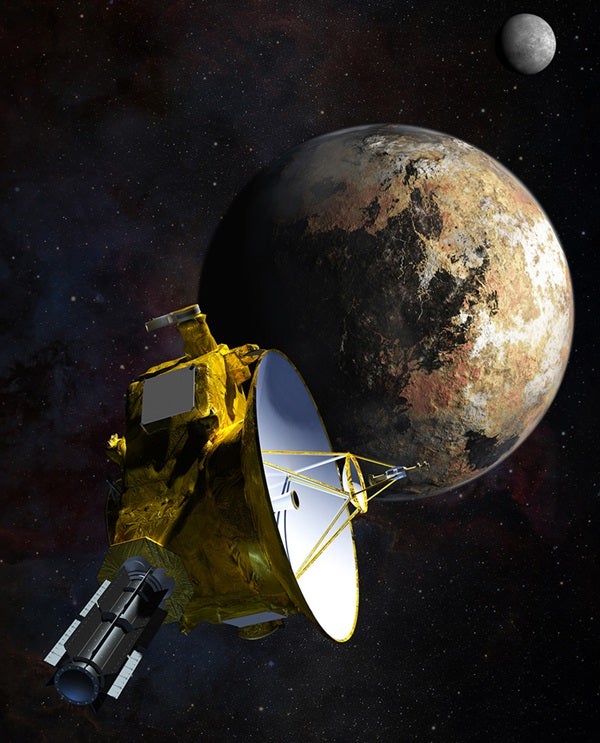The mission operations center at the Johns Hopkins University Applied Physics Laboratory, Laurel, Maryland, lost contact with the unmanned spacecraft at 1:54 p.m. EDT July 4 and regained communications with New Horizons at 3:15 p.m. EDT, through NASA’s Deep Space Network.
During that time, the autonomous autopilot on board the spacecraft recognized a problem and — as it’s programmed to do in such a situation — switched from the main to the backup computer. The autopilot placed the spacecraft in “safe mode” and commanded the backup computer to re-initiate communication with Earth. New Horizons then began to transmit telemetry to help engineers diagnose the problem.
The investigation into the anomaly that caused New Horizons to enter “safe mode” has concluded that no hardware or software fault occurred on the spacecraft. The underlying cause of the incident was a hard-to-detect timing flaw in the spacecraft command sequence that occurred during an operation to prepare for the close flyby. No similar operations are planned for the remainder of the Pluto encounter.
“I’m pleased that our mission team quickly identified the problem and assured the health of the spacecraft,” said Jim Green, NASA’s Director of Planetary Science. “Now — with Pluto in our sights — we’re on the verge of returning to normal operations and going for the gold.”
Preparations are ongoing to resume the originally planned science operations July 7 and to conduct the entire close flyby sequence as planned. The mission science team and principal investigator have concluded that the science observations lost during the anomaly recovery do not affect any primary objectives of the mission, with a minimal effect on lesser objectives. “In terms of science, it won’t change an A-plus even into an A,” said New Horizons Principal Investigator Alan Stern of the Southwest Research Institute, Boulder.
Adding to the challenge of recovery is the spacecraft’s extreme distance from Earth. New Horizons is almost 3 billion miles (5 billion kilometers) away, where radio signals, even traveling at light-speed, need 4.5 hours to reach home. Two-way communication between the spacecraft and its operators requires a nine-hour round trip.










